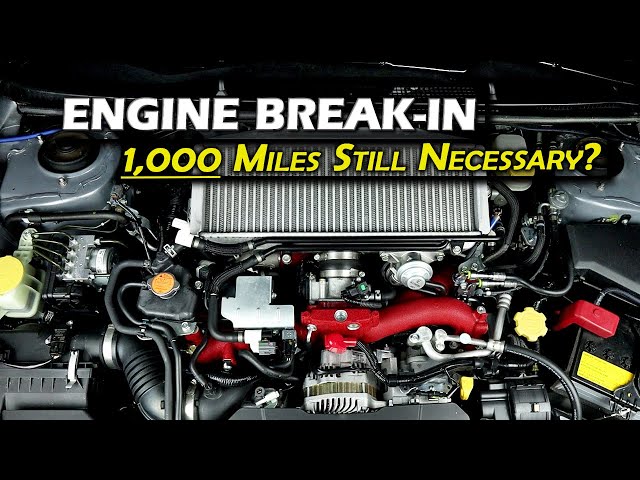- How Many Miles to Break In a New Car Engine?
- Importance of Breaking In a New Car Engine
- Recommended Break-In Mileage
- Older Cars: 500-1,000 Miles
- Modern Cars: 0-500 Miles
- Tips for Breaking In a New Car Engine
- 1. Vary Engine Speed
- 2. Avoid Heavy Loads
- 3. Use High-Quality Oil
- 4. Avoid Idling for Extended Periods
- Signs of Proper Break-In
- 1. Smooth Idle
- 2. Reduced Engine Noise
- 3. Improved Fuel Economy
- Conclusion
How Many Miles to Break In a New Car Engine?
Importance of Breaking In a New Car Engine
Breaking in a new car engine refers to operating the vehicle during its early stages of use in a manner that allows its components to properly adapt and seat. It’s crucial for the long-term performance and reliability of the engine.
During the break-in period, the metal surfaces of the engine’s moving parts come into contact and gradually wear in against each other, creating a smooth, optimal fit. This process helps ensure proper lubrication, reduces friction, and minimizes premature wear and tear.
Recommended Break-In Mileage
Older Cars: 500-1,000 Miles
In the past, manufacturers often recommended breaking in new engines for 500 to 1,000 miles. This involved gradually increasing engine speed and load while avoiding excessive acceleration or prolonged high-revving.
Modern Cars: 0-500 Miles
Advancements in engine design and manufacturing techniques have led many modern car manufacturers to reduce or even eliminate the traditional break-in period. Some vehicles may require as little as 0 to 500 miles of moderate driving to seat the engine components.
However, it’s always best to consult your vehicle’s owner’s manual for specific recommendations and any updates on break-in procedures.
Tips for Breaking In a New Car Engine
1. Vary Engine Speed
Avoid prolonged driving at constant speeds or high RPMs. Vary your engine speed by accelerating and decelerating gradually within the recommended range.
2. Avoid Heavy Loads
Limit towing, carrying heavy loads, or driving up steep hills during the break-in period. This can put extra stress on the engine and moving parts.
3. Use High-Quality Oil
Use the recommended high-quality oil specified in your vehicle’s owner’s manual. Avoid synthetic oils during the break-in period, as they may contain additives that can interfere with the proper seating of engine surfaces.
4. Avoid Idling for Extended Periods
Excessive idling can allow condensation to build up in the engine, potentially leading to sludge formation. If you need to idle, keep it to a minimum.
Signs of Proper Break-In
1. Smooth Idle
A properly broken-in engine should idle smoothly and consistently without any noticeable vibrations.
2. Reduced Engine Noise
After the break-in period, the engine should run quieter with less audible noise.
3. Improved Fuel Economy
As the engine components settle in, friction should decrease, resulting in improved fuel economy.
Conclusion
While break-in procedures may vary depending on the vehicle, it’s essential to follow the recommendations provided by the manufacturer. Proper break-in practices help ensure the longevity, performance, and reliability of your new car engine.





